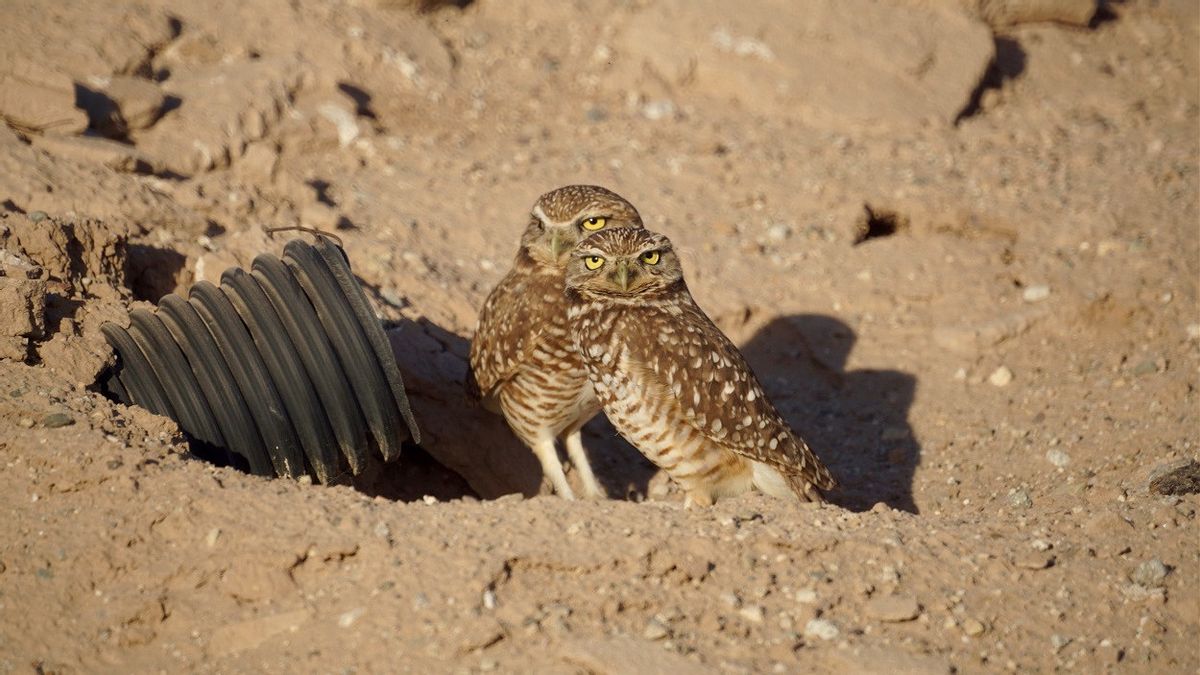JAKARTA - How do you encourage owls to move house? By spraying fake shit all around of course.
A team of Californian scientists has helped a species of little owl find a new home, after its habitat has dwindled due to the construction of new buildings in areas of the United States, such as Silicon Valley.
Local biologists have been trying to release Western Burrowing Owls in the protected prairie for several years, but getting the little raptors to accept their new homes has proved difficult.
These small and charismatic nightbirds measure just 19-28cm long, about the size of a robin, but have longer legs than their larger cousins, citing Euronews Jan. 28.
This subspecies is also quite friendly, preferring to live in burrows close to other species of its kind. Despite their friendly nature, the number of burrowing owls has declined in California, down by a third since 1965, due to encroachment on the built environment.
In the wild, burrowing owls live an average of nine years, although they have many natural predators, including coyotes and snakes. Due to their small size and the fact they live in burrows, they are vulnerable to attack by domestic cats and dogs.
Despite their name, owls actually make their homes in the burrows of other species, including prairie dogs and ground squirrels.

While they hunt at night like most owls, these owls are also active during the day, with long legs that help them run back to their burrows if a predator approaches.
To help restore owl numbers, biologists from the San Diego Zoo Wildlife Alliance, in collaboration with the US Fish and Wildlife Service, came up with a plan to make owls feel more at home.
Previous attempts have revealed that simply releasing owls into new prairie habitats doesn't get the desired results, so, for this pilot project, biologists tried to make them look like owls that already live here.
"They like being in the environment, living near other owls," Colleen Wisinski, a conservation biologist with the San Diego Wildlife Alliance, told the Associated Press.
Scientists, including Wisinski, got creative by spraying the field with what looked like owl droppings, but was actually white paint. They also played recorded owl calls for miniature birds of prey, so they thought the prairie was already inhabited.
And according to findings published this week in the journal 'Animal Conservation', their hard work is paying off. During the study, which took place between 2017 and 2018, 47 burrowing owls were moved to 15 new locations.
Less than half are equipped with GPS trackers, so scientists can monitor their movements, and biologists visit them too.
Nevertheless, most pocket-sized owls settled in their new prairie wells.
And as a marker of true research success, in 2020 approximately 50 owl chicks (baby owls) were born at the prime site of the Rancho Jamul Ecological Reserve, in southwest San Diego County, United States.
The English, Chinese, Japanese, Arabic, and French versions are automatically generated by the AI. So there may still be inaccuracies in translating, please always see Indonesian as our main language. (system supported by DigitalSiber.id)








